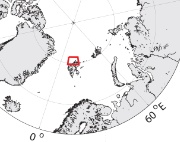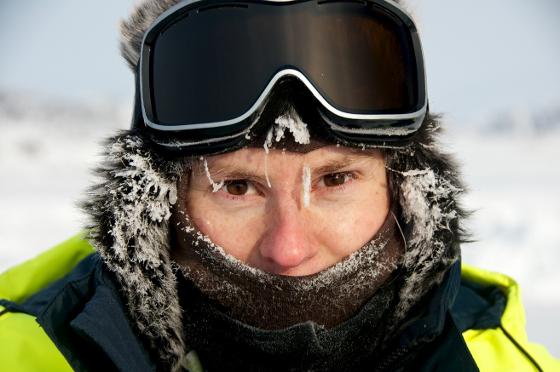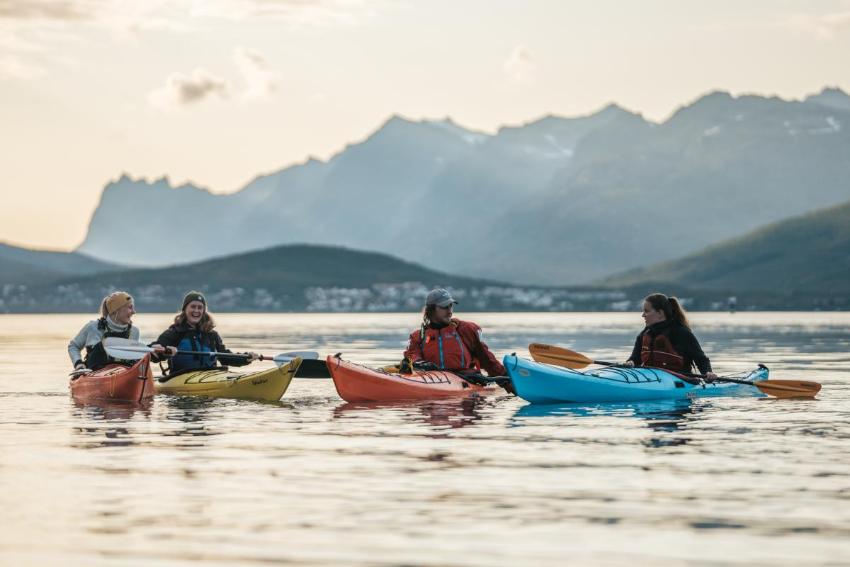Pictures from Satellites Give Precise Maps Over the Arctic Sea Ice

 |
| Thickness of the ice was determined by an instrument hanging from the helicopter while flying at low altitudes. These measurements were compared with snow and ice samples and radar images from the satellite, and used to develop an analysis tool for sea ice. |
Physicist Mari-Ann Moen has been developing new methods that can be used for mapping and characterization of sea ice. Her research is relevant for climate monitoring. Precise and updated ice charts are also important for fishing boats, shipping and for rescue operations in the polar seas. Additionally, these maps are of interest for the oil industry and other installations in the Barents sea.
Time Consuming with Manual Interpretation of Ice Charts
"New ice charts are currently prepared five times per week by the Meteorological Institute. Maps are drawn manually by experienced meteorologist and rely mainly on radar images obtained from satellites. Every year thousands of satellite images are being analyzed in Norway. This is a very time consuming process, and gives room for subjective assessments" says Moen.
Will Distinguish Compact Ice from Surface Slush
"We have attempted to develop a method for automated analysis of radar images from the satellite, which would allow us to characterize the sea ice from the pictures using computers. We want the computer program to distinguish between different types of ice, and to determine for example whether we have compact and massive ice, a lot of layered packing, areas with so-called pressure ridges where the ice is pushed up in mountain-like formations, or slush-like soup that lies on the sea surface" says Moen.
 |
| The red circle in the image above shows the area north of Svalbard, where Moen collected her research data. Illustration: Moen |
Out At Sea with KV Svalbard
Mari-Ann Moen has analyzed sea ice images obtained from satellite, boat and helicopter out in the polar sea north of Svalbard. Moen went to sea with the coast guard ship KV Svalbard, from where she measured the ice's salt content and snow depth on the ice. To obtain the ice thickness, researchers used an instrument hanging from the helicopter.
She focused on a small geographic area of approximately 25 km x 25 km, where she collected both satellite and ground data during one week in April 2011. Radarsat 2, a Canadian satellite, takes radar images of the Earth's surface which are downloaded by Kongsberg Satellite Services and made available to researchers. Moen used radar images from different angles in order to detect different properties in the sea ice.
 |
| Mari-Ann Moen has participated in research expeditions just north of Svalbard where she collected data for characterization of sea ice. Photo: Angelika Renner |
Finding the Connection Between Satellite Images and the Ice Properties
To complete the radar measurements, she performed ground measurements of the ice in the same area that the satellite data was taken. Salinity, moisture in the ice, thickness and packing are examples of the properties that researchers wanted to build into their analyses.
"Our objective is to contribute to the development of robust and reliable automated calculations for the description of sea ice, and through this, contribute to the effective production of the ice charts" says Moen.
On January 16th 2015 Mari-Ann Moen defended her thesis entitled: "Analysis and Interpretation of C-Band Polarimetric SAR Images of Sea Ice." Her work was funded by RDA Troms, the Norwegian Polar Institute, Framsenteret, KSAT and The Research Council of Norway. Torbjørn Eltoft at the Departmentof Physics and Technology was her supervisor.



